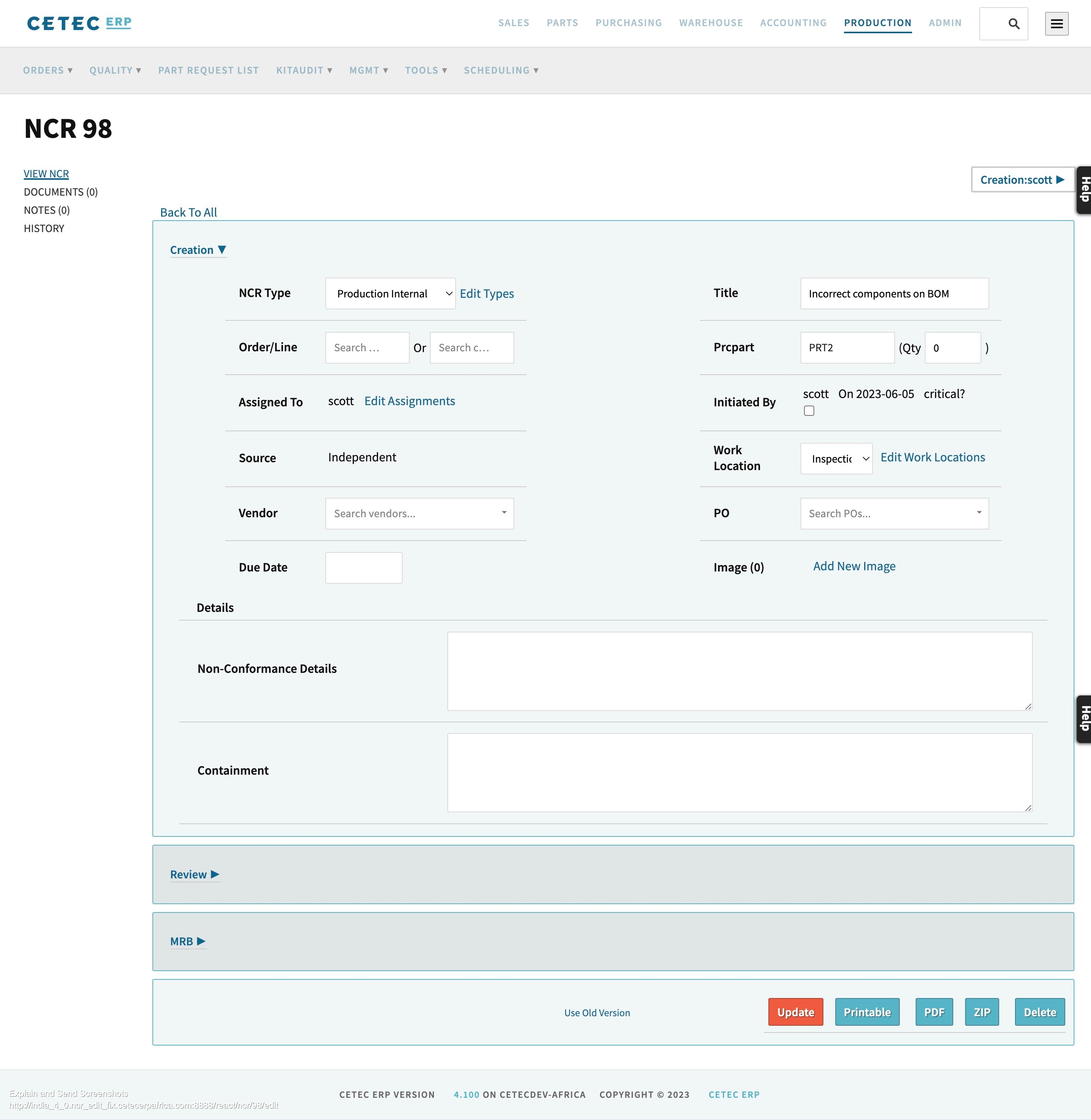New Look for NCR Page
With our 4.10 release, we are pleased to debut the new and improved NCR screen! It has a cleaner layout that is more intuitive with the NCR workflow, and has a much faster page load time. We accomplished this by using the most innovative web programming languages available, “React.JS” (front end) and “GoLang” (back end). Over the coming releases, you will start to see more and more pages undergoing similar changes and improvements. Let’s review the updates to the screen as well as the tools used to make this change.
The first improvement you will notice is the speed of creating, updating, and saving data on the new NCR screen. The new technology under the hood allows for significantly faster load times for many lists, reports, and pages - in some cases 100x faster, such as on the Production Order list. Workflow changes, responsibility assignments, document uploads, and more processes will all become nearly instantaneous within the NCR screen, dramatically improving user experience.
Along with increased speed, the NCR page has received a cosmetic makeover to be cleaner, better organized, and more intuitive. The layout and functionality of the screen will not change; the same fields will be in the same sections so as to not disrupt usage patterns of your users.
The page has been broken out into three collapsible sections for added convenience and ease of readability. The sections are “Creation”, “Review”, and “MRB”. These will change based on the progression of workflow stage changes. As a user moves the NCR from Creation to Review, the section of the screen will change, allowing the user to focus on that specific area. This will increase legibility and save time spent creating and managing an NCR.

These improvements are possible in part because of the cutting-edge technology harnessed to sharpen the system. If you are interested in the tech-side of these changes, here is a review of the languages/technology used - “React.JS” for the front end and “GoLang” for the back end.
React.JS is an open-source JavaScript framework used for building interactive user interfaces and web applications with significantly less code than you would with standard JavaScript. React.JS allows you to optimize the performance of your websites and apps without sacrificing memory. This makes for a simpler, and significantly faster, user interface within Cetec ERP. If you’re interested in learning more about React.JS and how it is used by software developers, resources such as https://codeinstitute.net/global/blog/what-is-react-js/ and https://www.codingdojo.com/blog/what-is-react are great places to begin.
GoLang is an open source programming language developed by Google. It was designed to solve several problems, including slow build time, uncontrolled dependencies, effort duplication, difficulty writing automatic tools and cross-language development. Because of GoLang’s fast startup time, low runtime overhead and ability to run without a virtual machine (VM), it has become a very popular language for writing microservices and other uses. GoLang is used for concurrent programming – a strategy to execute multiple tasks at one time, out of order or in partial order. Check out a programming-focused site such as https://www.techtarget.com/searchitoperations/definition/Go-programming-language#:~:text=What%20is%20the%20Go%20or,and%20other%20types%20of%20software.
We understand how essential it is for your business to have an ERP that is stable, reliable, and efficient. Cetec ERP is committed to continuously improving the product to increase employee efficiency and user experience, and allow your business to remain competitive and resilient. We will continue to be pragmatic and innovative in our disruptive approach to manufacturing ERP, meaning you are positioned for growth and security as our customer.
